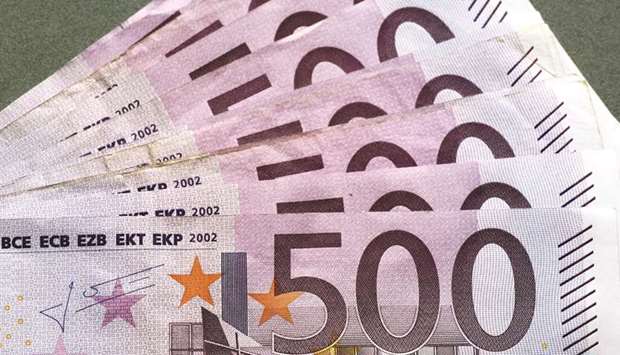The euro and yen are set to keep on surprising this year on prospects the Federal Reserve will slow monetary tightening while central banks in Europe and Japan move towards reducing stimulus, Asia-based foreign-exchange strategists say.
Traders are betting the Fed will raise interest rates just once more this year after two hikes in the first half. Meanwhile its decision to set out some details on reducing its balance sheet may add to speculation the European Central Bank and the Bank of Japan will consider reducing asset purchases. The ECB this month ruled out further rate cuts and the BoJ is said to be thinking how to communicate an eventual policy change, even as Governor Haruhiko Kuroda reiterates he has no intention of ending stimulus soon.
“What’s clearest about the latter half of the year is the dollar looks to be the weakest of the three,” said Junya Tanase, chief foreign-exchange strategist at JPMorgan Chase & Co in Tokyo. “With the Fed already neutralising policy, talk of tapering surrounding the ECB and the BoJ puts monetary policy direction in alignment. This lays the ground for the euro and the yen to strengthen against the dollar.”
Tanase forecasts the yen will strengthen to 105 per dollar and the euro will climb to $1.15 by year-end.
The dollar has fallen against all its Group-of-10 peers this year, with the Bloomberg Dollar Spot Index sliding 5.3%. The lack of progress on US fiscal stimulus and tax reform, a decline in Treasury yields and improving economic growth in Europe and Japan have weighed on the currency. The euro is the strongest performer versus the greenback, rising 6.2%, while the yen has gained 5.1%.
The ECB is likely to announce next year’s asset-purchase plans in September and reduce its monthly target, said Shuji Shirota, head of the macroeconomic strategy group at HSBC Securities Japan in Tokyo. “Markets haven’t fully priced in the ECB’s exit policy so the euro will strengthen as markets gradually take note of this,” he said. Shirota expects the dollar to weaken to 100 yen and $1.20 per euro by year-end.
Even in Japan, where the BoJ is expected to maintain its policy rate at negative 0.1% for some time yet, monthly bond buying has been slowing in a form of stealth tapering, according to Minori Uchida, head of global market research at Bank of Tokyo-Mitsubishi UFJ in Tokyo.
“This secret tapering has been effective in capping the dollar against the yen,” he said. Uchida expects the yen to strengthen to 107 per dollar by year-end and said an overshoot to 104 is possible.
The issue of global trade may get more attention in the second-half of the year and is another factor that could weigh on the dollar, said Ko Haruki, head of the financial solutions group at CIBC World Markets (Japan) in Tokyo.
US President Donald Trump may use a weaker dollar as the “easiest way” to respond to the country’s trade deficits if he faces slow progress with the rest of his economic agenda, he said. Haruki sees the euro outperforming the greenback and a “tug-of-war” between the yen and the dollar, with a “slight” bias toward Japan’s currency for the rest of 2017.
Analysts have been trimming their forecasts for the greenback. Strategists surveyed by Bloomberg now see the dollar climbing to ¥114 by year-end, rather than the 115 estimated at the end of 2016. The US currency is now seen weakening to $1.12 per euro, compared with a previous forecast of a gain to $1.07.
An extra layer of uncertainty in currency markets involves the possible change of key policy makers over the next 12 months. Fed Governor Janet Yellen’s term ends in February and BoJ Governor Kuroda’s term is up in April.
“Monetary policy will be central to the G-3 outlook in the second half of 2017 but the potential shift of the Fed’s Board of Governors to a more hawkish composition will also be important,” said Mansoor Mohi-uddin, a Singapore-based strategist at NatWest Markets, a unit of Royal Bank of Scotland Group. In any case, Treasury yields will be key, he said.

The euro and yen are set to keep on surprising this year on prospects the Federal Reserve will slow monetary tightening while central banks in Europe and Japan move towards reducing stimulus, according to Asia-based foreign-exchange strategists


